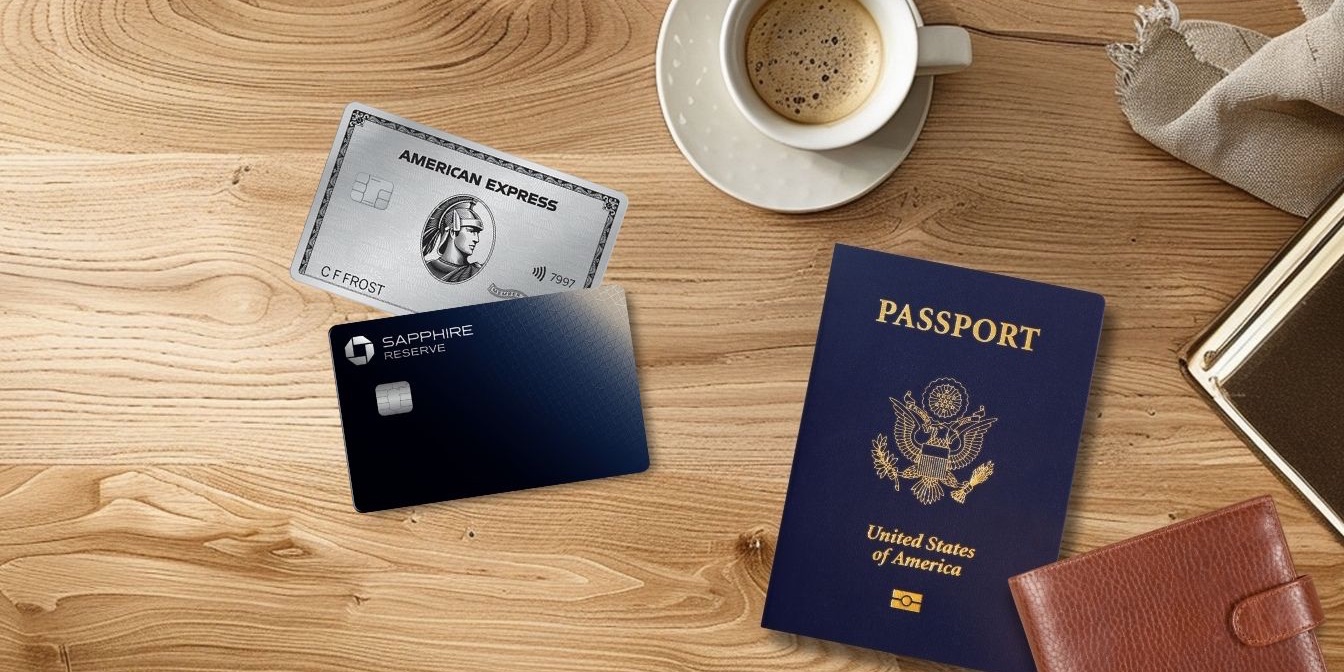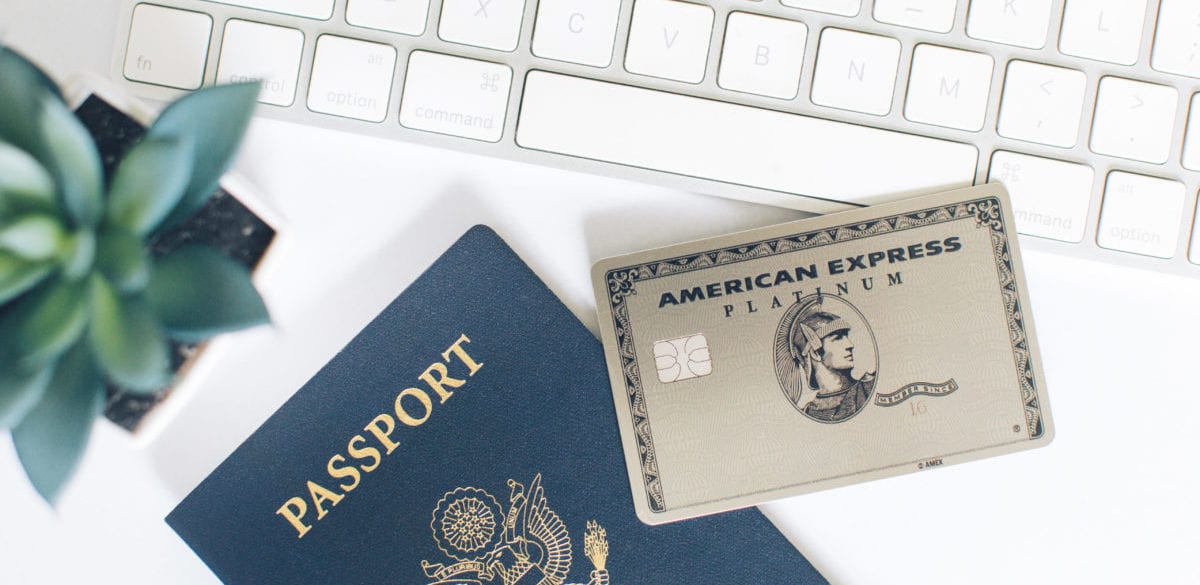During the Cold War, the U.S., NATO, and the former Soviet Union stockpiled weapons for a battle that never was. More than 30 years later, the same thing’s happening in the points and miles world – except the arms are premium, ever-pricier travel rewards cards.
OK, maybe it’s not fair to compare credit card perks to nuclear missiles … but it’s a fitting analogy for today’s all-out battle.
For years, it was a one-horse race: There was the American Express Platinum Card® … and everyone else. Then Chase crashed the party with the Chase Sapphire Reserve®, Citi took a swing with the now-defunct Citi Prestige Credit Card – before recently reviving the fight with the Citi Strata Elite℠ Card – and Capital One muscled in with the Capital One Venture X Rewards Credit Card. Now, even Barclays and Bank of America are firing shots with new premium airline cards.
Add it all up, and the battlefield has never been more crowded than it is today. Every bank is upping the ante with more “value” in the hopes of winning your wallet – and your loyalty.
Here’s what’s driving this race, why it's happening, and most importantly, how you can make it work for your travel rewards strategy.
What We're Seeing
Let's start at the top. American Express has long been the undisputed heavyweight champ in the premium card space, with its flagship Amex Platinum Card debuting over 40 years ago. Over the years, the annual fee has steadily increased from $250 per year, when it first launched, to its current annual_fees see rates & fees) price point. But that fee is set to go even higher when Amex rolls out the “refreshed” Platinum Card as soon as next month.
After Chase unveiled the re-tooled Sapphire Reserve in June, complete with “money-saving” credits and a whopping annual_fees annual fee, the door is wide open for Amex to raise the bar even higher.
Just last month, Citi joined the race with its new Strata Elite Card, offering more of the same use-them-or-lose-them statement credits you'll find on competitors' cards at a slightly lower $595 price point.
Meanwhile, Barclays launched a new premium JetBlue card late last year, and Bank of America is on the verge of doing the same with Alaska. Add those to the list of $500 or $600 per year airline cards from the big three domestic carriers and the top-tier offerings from various hotel chains, and the field is getting crowded in a hurry.
The rare bright spot in this fight? After launching the Venture X Card back in 2021, with much fanfare, the card sits mostly untouched nearly four years later with the same $395 annual fee and no immediate signs of a refresh. That's a really good thing for travelers because, despite a few tweaks (and another one on the way), the Venture X remains one of the best values of any card on the market.
Still, with travel cards from seven different banks costing $395 per year or more (in some cases, much more), there's never been more competition than there is now. Not long ago, it wasn't out of the question to hold two or even three of these top-tier cards at the same time. Doing so meant you could build out your wallet with the perks and benefits that best suited your travel style.
Now? Not so much … and it's by design.
Why Is This Happening?
Flashy travel cards, packed with perks, are a Trojan horse for what the banks are really after: Your undivided loyalty.
While the money they get from these high-priced annual fees is undoubtedly a motive, what they really want is your wallet share. By raising prices to a point where travelers have to choose between their card and the competition, they're hoping to force you to move on from the other cards in your arsenal.
By making their premium travel card the only one in your wallet, the bank is able to capture additional fees on every dollar you're spending … often in non-bonus categories. Considering the wealthiest 10% of Americans – the type that wouldn't blink at an $800 per year credit card – now make up half of consumer spending, those additional swipe fees add up, in a hurry.
But there's even more to it than that. Once you've got their top travel card, they can try to sell you other bank products and services like checking and savings accounts, home and auto loans, and investment advice.
That high-priced credit card is just the bait they're using to reel you in to their broader ecosystem.
When Will It End?
Current annual fees probably aren't high enough to bat an eye at for the richest of the rich. But for the rest of us, it feels like we're reaching a breaking point. We have to be … right?
I'll be the first to admit that paying $400 or more for a credit card sounds crazy (it kind of is), but I still have a few of them in my wallet … and trust me, I'm not in the “richest of the rich.” I've long viewed credit card annual fees as an investment in my future travels. With eye-popping welcome offers, added perks like lounge access and elite status, and rewarding bonus categories for my everyday spending, the math on many of these pricey cards has worked for me.

But as the fees grow higher – quickly nearing $1,000 per year – it's getting harder to justify holding even one of these cards, let alone two or three. Sure, the banks keep adding new features and benefits to help justify the fee hike. But every time they do, it feels like less of an investment in my future travels and more of an added burden to spend money I otherwise wouldn't have.
Take the Sapphire Reserve's new dining credit of up to $300 per year ($150 semi-annually), for example. Do I spend $300 per year on dining? You bet. Is it at one of Chase's “Sapphire Reserve Exclusive Tables?” Not always. By going out of my way to use this credit (in the name of value), I'm likely going to spend more than I ordinarily would on a meal.
Don't get me wrong, there's real value in this credit – and plenty of others like it – but by chasing the benefits, I'm letting the bank dictate where I spend my dollars. Or worse yet (maybe?), I let the credit go to waste and get none of the “value” in return.
It's getting to the point where I'm ready to drop a few of these premium cards in the name of savings and simplicity … and I can't be alone.
Bottom Line
The battle for premium travel cards has turned into an all-out arms race, with banks piling on perks, credits, and ever-higher annual fees to lock in your loyalty. While Amex, Chase, Citi, and others keep raising the stakes, travelers are left weighing whether the so-called “value” is worth shelling out $400, $600, or even $800 a year.
At some point, the math stops working – and for many cardholders, that breaking point may already be here.








Right now I hold the Venture card, Amex Platinum and Chase Reserve and I’m contemplating closing at least one. My question, if I do close a card so I immediately lose all of the miles? I have to assume it’s more wise to use or transfer the miles before closing?
Totally agree, Jackson! The banks will drive consumers out of their products with these fees. And this will have long-term negative effects on their reputations. Will consumers return to a bank they feel has been ripping them off? I doubt it.
I willing play the points/miles/perks game because I consider annual fees as an investment in future travel, but they’re going too far. I can’t get enough value to justify the higher yearly fee with every premium card, yet one individual card doesn’t fill all my needs. I’d love it if the banks would offer a menu of perks I could choose from to get my annual fee’s worth. Or lower my annual fee if I opt out of some perks. I know, wishful thinking!
Absolutely. I recently closed the Amex Platinum I had kept for years. The fee is too high and jumping through hoops to get the credits was not a proud experience. It doesn’t seem like much of a problem for the banks though with how crowded the lounges are.